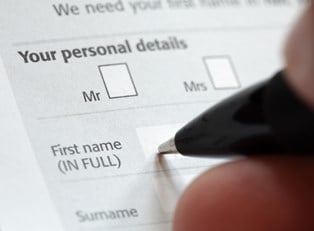Lenders often ask “Are you a good candidate for personal loans?” in a variety of ways. Many people need to borrow money for a specific purpose or to pay off higher interest rate debts, such as credit cards. The bank and the borrower want to assess an individual’s ability to repay loaned funds within the agreed upon terms offered by the bank.
A personal loan is usually structured as an unsecured or secured loan. In an unsecured loan, the borrower is provided funds without the need to offer security (collateral) to the financial institution. Banks and other lenders generally charge a higher interest rate for unsecured loans. Alternatively, the bank may require security in order to offer the borrower a lower interest rate, fees, or a longer loan term. The individual in search of a personal loan should have good credit. He or she must fill out the lender’s loan application and provide necessary support documents, such as paystubs, income tax returns, bank statements, or other proof of income.
Borrower Self-Assessment
Before making an application for a personal loan, borrowers should assess their financial condition. They should begin by reviewing credit records such as those distributed by major credit reporting organizations (CROs), including Equifax, Experian, and TransUnion. Review credit file information with care and report any errors in writing with supporting documentation. Follow-up with CROs in about a month to make sure changes or corrections are made to the credit file.
Personal Financial Statement
Start with a list of any owned assets, e.g. car, house, stocks and bonds, precious metals, or land. Next, tally up total monthly income, including salary, rents, interest from stocks and bonds, pensions, or retirement plans. Subtract all liabilities, including outstanding debt or expenses, such as credit cards, student loans, or other accounts repaid each month.
Loan Repayment Resources
The lender wants to know that the borrower has sufficient resources to repay a loan.Request proof of income from an employer to confirm monthly income amounts and employment status. Paystubs, direct deposit statements, bank statements, or invoices paid by clients are also income confirmation sources to present to the lender.
Loan Application
Fill out the lender's loan application and present the requested documentation of income, assets, and liabilities. If collateral for the loan is requested, make sure to make loan payments on time and according to the lender's terms and conditions.




